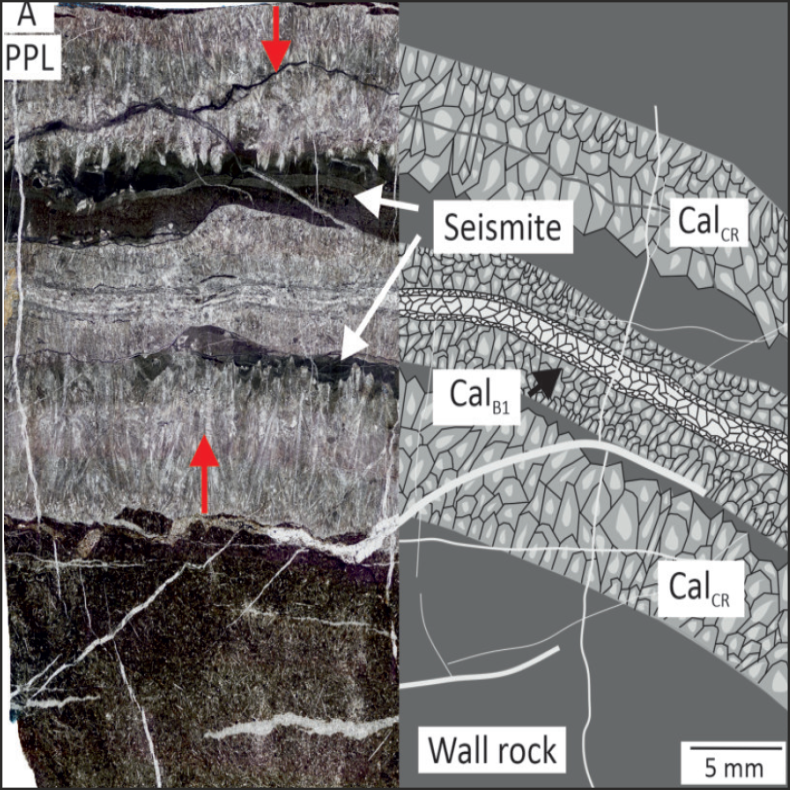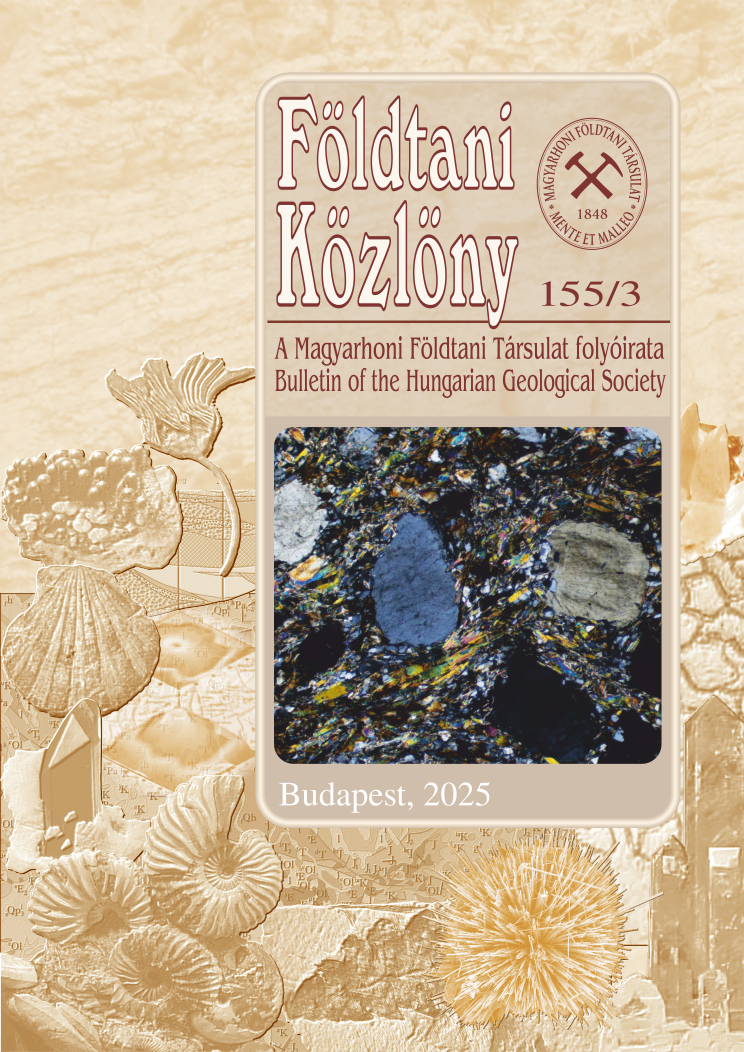Törésrendszerekhez kapcsolódó paleofluidum-migráció az Óbányai-völgyben (Keleti-Mecsek)
Absztrakt
Az elmúlt két évtizedben a Mecsek-hegység területén több triász és jura képződményben azonosítottak szénhidrogén-tartalmú paleofluidum-migrációra utaló nyomokat. Jelen tanulmány a legkeletebbi ismert előfordulást vizsgálja, amelyet a részben cementált törésrendszerek képviselnek az Óbányai-völgyben. Célunk ezen törésrendszerek kialakulási körülményeinek rekonstrukciója volt. Klasszikus szerkezetföldtani módszereket alkalmazva megkíséreltük azonosítani a repedésrendszert kialakító szerkezetfejlődési eseményeket. Eredményeink alapján két deformációs fázist azonosítottunk: a) egy redőképződést és b) egy ezt követő, balos eltolódást. A völgyben megfigyelt redőhöz kapcsolódó kőzetrések és vetők elméleti irányait meghatároztuk, majd ezeket összevetettük a terepi orientációs adatokkal. Elemzéseink alapján több, a redőződéshez kapcsolódó törési irányt, kalciteret és vetőbreccsát azonosítottunk. Hat érgeneráció fluidumzárvány-petrográfiai vizsgálata vizes és szénhidrogén-tartalmú fluidumzárványok jelenlétét igazolta. Eredményeink arra utalnak, hogy a szénhidrogén-tartalmú fluidummigráció a redőződéshez kapcsolódó négy elméleti törési sík egyikéhez kapcsolható. Noha a fluidumzárványok csupán korlátozott információt nyújtanak a fluidummigráció hőmérsékleti viszonyairól, több érszöveti sajátosság arra utal, hogy a törésrendszer fejlődése során a képződményben időszakosan megemelkedett fluidumnyomás uralkodott.


















